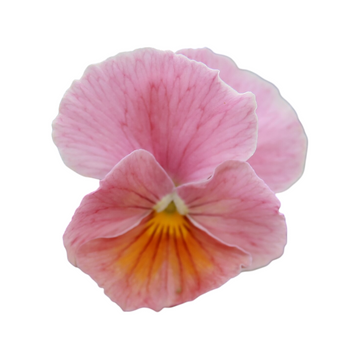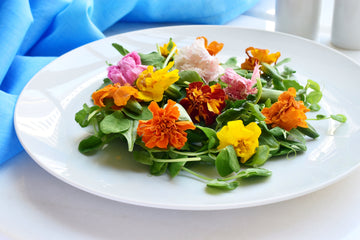Imperial Antique Shades F1 Viola X Wittrockiana

Freshly Harvested

Non-GMO & Natural

Nutrient Dense

Trusted by Chefs
15 Seeds+
🌸 Imperial Antique Shades F1 Viola Seeds
Viola × wittrockiana
A painter’s palette in bloom 🎨🌿, Imperial Antique Shades F1 Viola is a pansy variety that blends soft apricot, rose, cream, and lavender hues 💜🍑. Each bloom carries a vintage watercolor look, with unique shading that makes no two flowers alike. Compact, cool-season, and endlessly floriferous, these violas are both ornamental and edible — a favorite garnish for chefs and pastry artists 👨🍳🧁.
👅 Flavor Profile:
Mildly sweet 🍯, green & fresh 🌱, with subtle wintergreen notes ❄️.
🍴 Culinary Uses:
🥗 Scatter whole blooms or petals over salads for jewel-toned elegance
🧁 Top cakes, pastries & cookies with antique-colored florals
🍸 Float in cocktails, champagne, or ice cubes for a pastel touch
🍫 Pair with chocolate desserts or custards for striking contrast
🍵 Infuse syrups, jellies, or teas with delicate floral sweetness
👨🍳 Chef’s Pitch:
Imperial Antique Shades F1 is the viola for fine plating and pastry work 🌸👨🍳✨. With its watercolor mix of apricot, rose, and lavender tones, it turns simple cakes, cocktails, and salads into art. Chefs prize it not only for its edible petals but for the romantic, vintage aesthetic it brings to modern cuisine.
🌱 Growing Notes:
🪴 Compact plants, 6–8” tall, spreading habit
🌸 Multicolored pastel blooms, each flower uniquely shaded
⏱ Prefers cool weather — flowers spring & fall, may pause in summer heat
🌞 Grows best in sun to part shade
🌿 Easy to grow in borders, containers, and edible gardens
✨ Quick Facts:
-
Latin Name: Viola × wittrockiana (‘Imperial Antique Shades F1’)
-
Habit: Annual/biennial, compact 6–8” tall
-
Flavor: Mild, sweet, green, wintergreen-like
-
Culinary Uses: Cakes, cocktails, salads, jellies, syrups
-
Special Use: Pastel, vintage tones prized by chefs & florists

Imperial Antique Shades F1 Viola X Wittrockiana

Let’s Manifest Beauty.
Edible Flowers that Smile.
Edible flowers are more than just decoration — they’re a chef’s secret for adding elegance, fragrance, and subtle flavor to a dish. From citrusy marigolds to honey-sweet alyssum and tangy begonias, these delicate blooms transform plates into experiences. Each petal offers color, aroma, and taste, turning simple ingredients into a culinary statement.

Flowers are here to stay
The Art of Garnishing with Edible Flowers
A garnish should do more than decorate — it should enhance. Edible flowers bring color, fragrance, and subtle flavor to the plate, turning simple dishes into memorable experiences. From delicate petals scattered across a salad to a single bloom crowning a dessert, flowers add elegance and elevate presentation in ways that engage every sense.
The Secret Ingredient Chefs Trust
Widely used in professional kitchens, microgreens enhance flavor profiles while adding nutrition and a striking visual appeal to everything from sandwiches to fine dining creations.
Frequent Asked Questions
Q: What are Microgreens?
Microgreens are young, tender plants harvested just after the first leaves develop. They’re packed with flavor, color, and nutrients, making them both delicious and healthy.
Q: Are microgreens really more nutritious than regular vegetables?
Yes. Research shows that microgreens can contain up to 40x more vitamins and antioxidants (like A, C, K, and E) compared to their mature counterparts.
Q: How do I use microgreens in my meals?
They’re incredibly versatile—use them as a garnish, in salads, on sandwiches, in wraps, smoothies, soups, or even as a centerpiece ingredient in gourmet dishes.
Q: How long do microgreens stay fresh?
Stored properly in a fridge, microgreens typically last 5–7 days. To keep them at peak freshness, store them dry in a breathable container.













